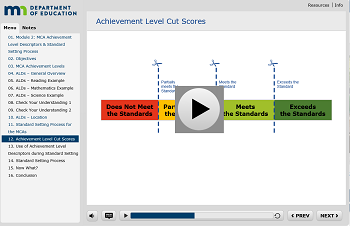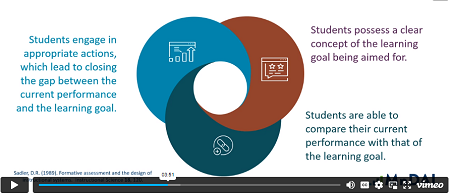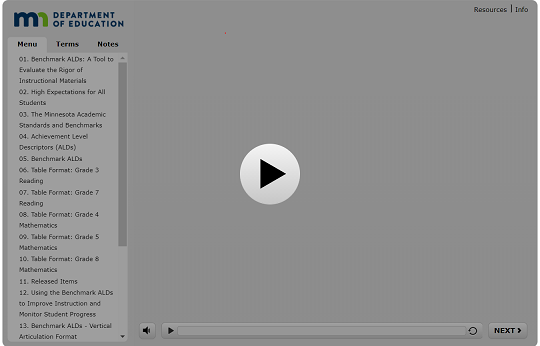Success Criteria
Describe what success looks like.
When clear learning goals are paired with success criteria, classroom assessment strategies are powerful tools for monitoring student learning toward grade-level expectations defined in the Minnesota K-12 Academic Standards. In addition to setting clear expectations for learning, it is critical to define how you will know if students have successfully met the learning goal(s). Success criteria outline what most students will say, do, make, or write to demonstrate that they have met the lesson learning goal.
Success criteria describes evidence needed to show student learning of grade-level knowledge and skills.
In collaboration with educators, the Minnesota Department of Education has developed Achievement Level Descriptors and Benchmark Achievement Level Descriptors. These descriptors use the knowledge and skills defined in the K-12 Academic standards and benchmarks to describe grade-level student performance observed on the Minnesota Comprehensive Assessment (MCA) across four achievement levels.
The resources below can be used by educators to develop more detailed success criteria for classrooms assessments, projects, and tasks.
Module 12 Narrated Presentation: Interpreting and Using Evidence
from Minnesota Data and Assessment Literacy (MnDAL) Online Modules Series Strand 3: Formative Assessment
Benchmark Achievement Level Descriptors
Benchmark Achievement Level Descriptors: A Tool to Evaluate the Rigor of Instructional Materials
Watch the training module below to learn how to use the Benchmark ALDs to evaluate the rigor of classroom assessments and instructional materials:
Educators have requested more detailed descriptions of the knowledge, skills, and abilities demonstrated by students across the four achievement levels on the MCA, beyond what the traditional Achievement Level Descriptors (ALDs) offer. In response to this, MDE staff collaborated to outline more specific descriptions: Benchmark ALDs for Mathematics and Reading in grades 3–8 and high school. The purpose of the Benchmark ALDs is to:
- Support educators in implementing equitable instruction for all students aligned to the Minnesota Academic Standards in Reading and Mathematics.
- Support educators in evaluating the depth and rigor of their curriculum, instruction, and classroom assessments.
All grades are available for download by grade level below. Educators may find this format useful for lesson and unit planning, as it shows all the benchmarks and the descriptions of student achievement across each achievement level within a grade level.
Reading | Math |
|---|---|
| Grade 3 | Grade 3 |
| Grade 4 | Grade 4 |
| Grade 5 | Grade 5 |
| Grade 6 | Grade 6 |
| Grade 7 | Grade 7 |
| Grade 8 | Grade 8 |
| Grade 10 | Grade 11 |
Achievement Level Descriptors

Developed by panels of Minnesota teachers and content experts, the ALDs were created by focusing on a set of questions in reference to the standards and test specifications. These questions might also be useful to educators in determining performance levels when designing classroom assessments and learning objectives:
- To what degree do students master each standard at each achievement level?
- For which knowledge, skills, and abilities (KSAs) is it possible to describe gradations of performance across four levels, and for which KSAs is it not feasible?
- How, according to the test specifications, are students able to show their mastery of KSAs?
- Mathematics MCA Achievement Level Descriptor Maps
- Reading MCA Achievement Level Descriptor Maps
- Science MCA-III Achievement Level Descriptor Maps



